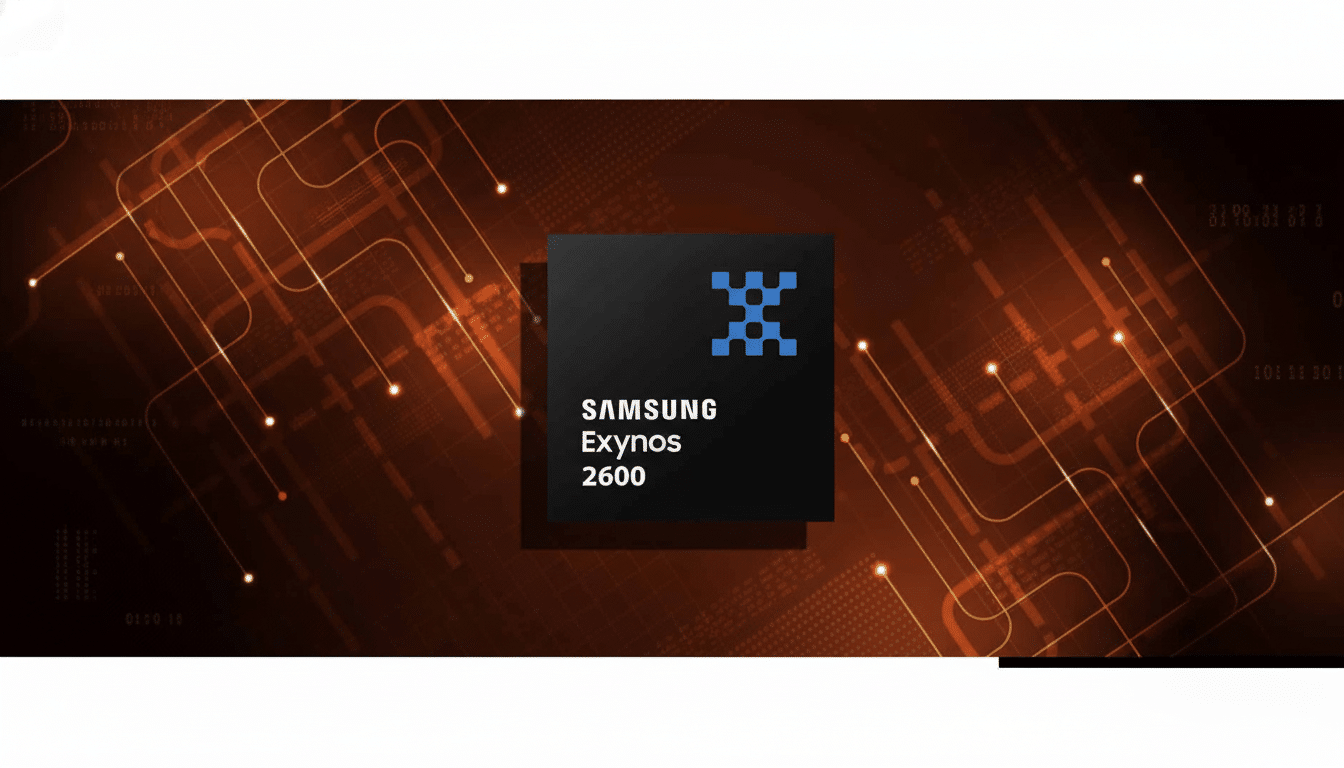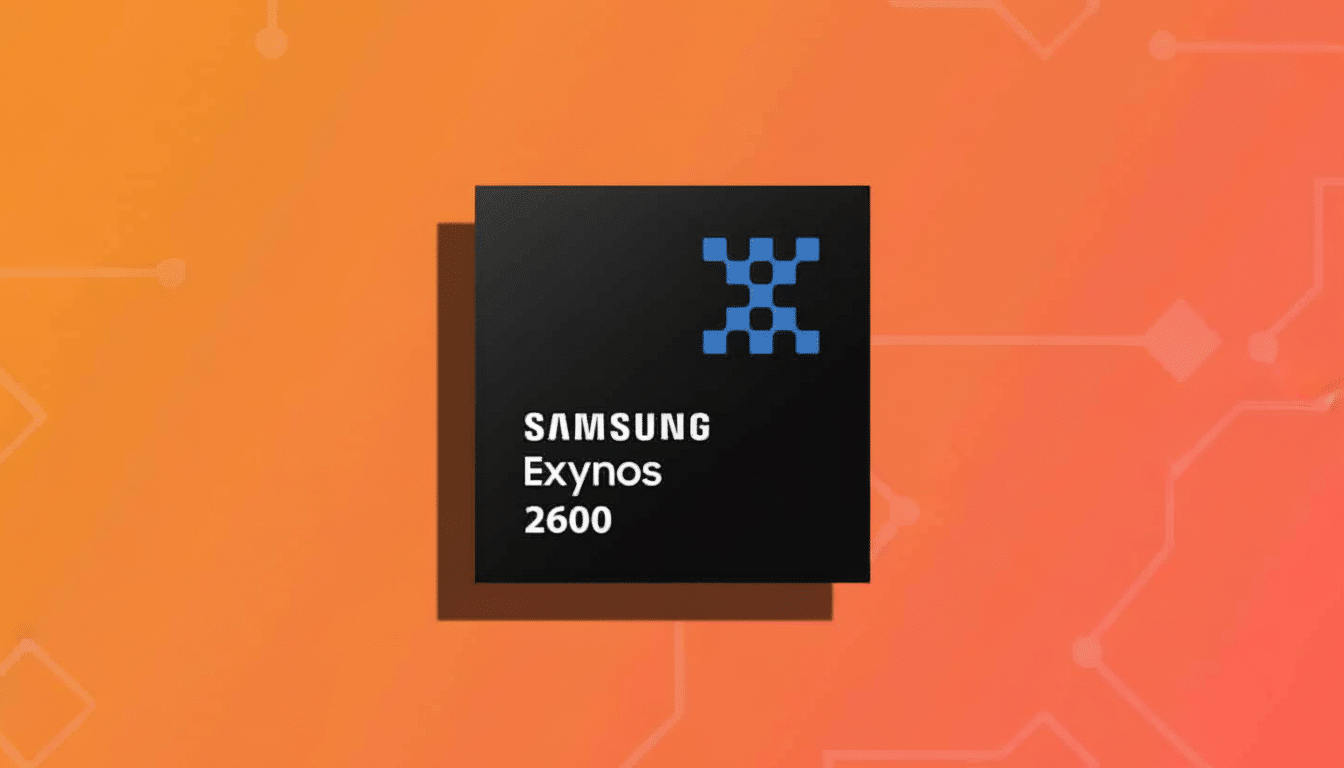Samsung’s next flagship is looking like it will make its most significant performance leap in years. A number of supply chain reports imply a strategic return to homebrew silicon for many Galaxy S26 models, along with an ambitious 2nm process jump and significantly beefed-up driving power for the AI engine. If true, this could reframe the S26’s speed, battery life, and camera smarts — or recycle old worries about heat and regional inconsistency.
What Might Change With The Exynos 2600 Chip
According to the Korea Economic Daily, half of Galaxy S26 phones might feature Samsung’s Exynos 2600, with the other half laden with Qualcomm silicon in significant markets including the US and Japan. The Exynos is rumored to be based on Samsung Foundry’s 2nm-class node and include a next-gen NPU for significant on-device AI gains. That’s the same report that claims an NPU uplift which, on paper at least, puts it out ahead of both Apple’s next A-series Pro-class chip and Qualcomm’s upcoming flagship — figures that will require third-party testing to confirm.

Graphics play a big role in the rumored refresh, too. Samsung’s lengthy partnership with AMD on Xclipse GPUs has already brought real-time ray tracing to phones; a bigger, battery-efficient 2nm design could increase that headroom for gaming sessions. Anticipate more seamless CPU/NPU/GPU coupling that speeds up processing for features like the camera, live translation, and on-device generative stuff (based on the cloud).
Why a 2nm Leap Is a Double-Edged Bet for Samsung
Node shrinks do not automatically make for better phones. It’s become just as much about yield, leakage, and power management as raw density. TSMC leads in advanced-node yields, while Samsung Foundry has been catching up with its newer process technologies, according to industry observers such as TrendForce. If the 2nm ramp is mature, S26 could get real-world wins in efficiency; if not, early silicon may run warmer or throttle earlier under load.
History raises fair caution. In previous split years, independent testing by publications like AnandTech and Notebookcheck revealed that Exynos-based Galaxy models often experience lower sustained performance and higher power draw compared to their Snapdragon counterparts — especially around the eras of the Galaxy S20 series as well as S22 handsets. Samsung’s most recent Exynos designs have gotten better, but the disparity between regions is still a source of consternation for consumers.
Real-World Stakes Beyond Benchmarks and Specs
The S26’s performance account will belong to what you feel, not just what synthetic charts may claim. A quicker, smarter NPU could enable larger on-device language models, more premium photo upscaling, and snappier live transcription — crucial for Samsung’s growing Galaxy AI suite. If that new silicon holds frequency under load, you will see steadier frame rates in games such as Genshin Impact and less warmth when capturing 4K video.

Battery life is the other domino. Improved efficiencies from a 2nm process, along with established power governors and a larger vapor chamber, would decrease background drain and expand screen-on time. Though in need of performance testing to know for sure, UL Solutions’ 3DMark stress tests and (especially) PCMark Work benchmarks should provide some early-warning signals on whether the S26 delivers not just quick bursts but long-haul stamina without thermal pinches.
Regional Divide and App Optimization Challenges
Meanwhile, when the number of silicon runs becomes a factor, such a dual-silicon approach may add additional complexity to optimization. Game studios and camera app makers tend to optimize for a single chipset early. Qualcomm Adreno drivers, for example, have a good track record for updates, while Samsung’s Exynos stack has been pushing faster updates lately and is in the process of rebuilding trust. Also, camera tuning can vary: image pipelines may employ different noise reduction and sharpening profiles based on the ISP and NPU, making subtle adjustments to texture and color.
Modem behavior on the network side is one of the key factors that determine battery life and reliability. Performance of Qualcomm modems, across bands and carriers, has been rock solid as well. If the Exynos version has its own power-efficient and carrier-aggregated in-house modem, then it removes one of the few remaining advantages Snapdragon models have had in some markets.
The Performance Wild Cards to Watch This Cycle
- Memory and storage: The decision on faster LPDDR5X at higher clocks or early LPDDR6, along with continued use of UFS 4.0, will affect responsiveness and AI throughput from Samsung.
- Cooling: Vapor chamber dimensions and graphite layers have a disproportionately large effect on sustained performance. Teardowns of recent generations have displayed steady growth; if that trend persists, the 2nm gains are more likely to stick.
- Software: Linux kernel fine-tuning, scheduler adjustments, and GPU driver cadence are the difference between battery life and frame pacing. Long-term update promises force Samsung to weigh peak scores against available support for years.
- Cameras: A faster NPU would open the door for more aggressive multi-frame merging, better night shots, and higher-quality Portrait video — although it takes judicious ISP tuning to prevent overprocessing. Independent tests from labs like DXOMARK and academic-style analyses reveal the trade-offs.
Bottom Line on the Galaxy S26’s Performance Outlook
If the reporting is accurate, Galaxy S26 is on course for its briskest performance turnaround in some time: a return of in-house 2nm Exynos in various regions, with an AI workhorse leading by example.
The upside is clear: quicker on-device smarts, more efficiency, and a stronger Samsung silicon strategy. The risks are the same — regional disparities, thermal management, and yield challenges. The only judgment that will matter is one rendered from independent testing across both types once the devices ship, with results out of outlets such as AnandTech, Notebookcheck, and UL Solutions giving us the best read on whether this leap actually hits.

